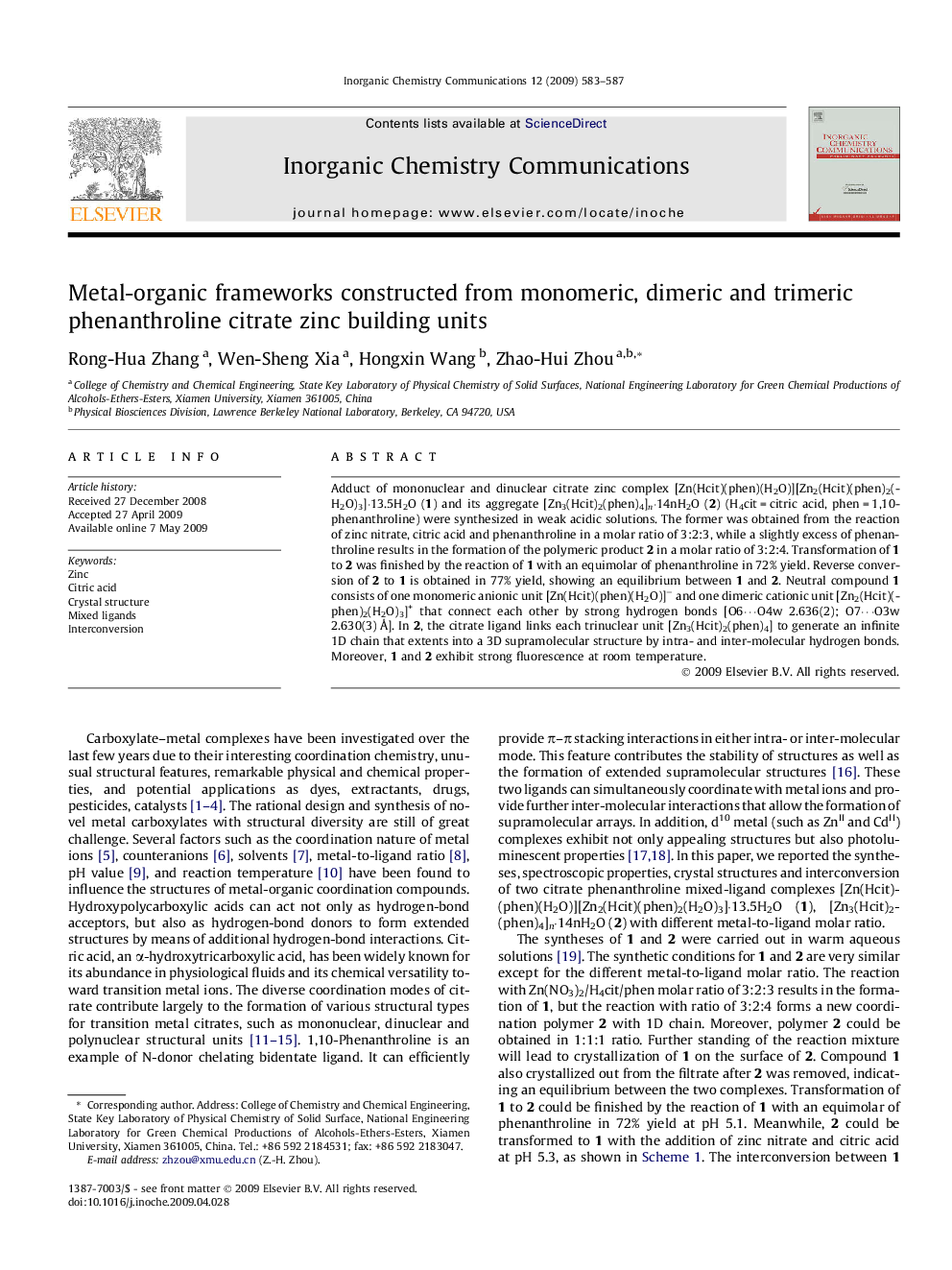| Article ID | Journal | Published Year | Pages | File Type |
|---|---|---|---|---|
| 1303138 | Inorganic Chemistry Communications | 2009 | 5 Pages |
Adduct of mononuclear and dinuclear citrate zinc complex [Zn(Hcit)(phen)(H2O)][Zn2(Hcit)(phen)2(H2O)3]·13.5H2O (1) and its aggregate [Zn3(Hcit)2(phen)4]n·14nH2O (2) (H4cit = citric acid, phen = 1,10-phenanthroline) were synthesized in weak acidic solutions. The former was obtained from the reaction of zinc nitrate, citric acid and phenanthroline in a molar ratio of 3:2:3, while a slightly excess of phenanthroline results in the formation of the polymeric product 2 in a molar ratio of 3:2:4. Transformation of 1 to 2 was finished by the reaction of 1 with an equimolar of phenanthroline in 72% yield. Reverse conversion of 2 to 1 is obtained in 77% yield, showing an equilibrium between 1 and 2. Neutral compound 1 consists of one monomeric anionic unit [Zn(Hcit)(phen)(H2O)]− and one dimeric cationic unit [Zn2(Hcit)(phen)2(H2O)3]+ that connect each other by strong hydrogen bonds [O6⋯O4w 2.636(2); O7⋯O3w 2.630(3) Å]. In 2, the citrate ligand links each trinuclear unit [Zn3(Hcit)2(phen)4] to generate an infinite 1D chain that extents into a 3D supramolecular structure by intra- and inter-molecular hydrogen bonds. Moreover, 1 and 2 exhibit strong fluorescence at room temperature.
Graphical abstractPhenanthroline citrate zinc complexes [Zn(Hcit)(phen)(H2O)][Zn2(Hcit)(phen)2(H2O)3]·13.5H2O (1) and its aggregate [Zn3(Hcit)2(phen)4]n·14nH2O (2) are isolated in weak acidic solution. The formations of the two complexes are sensitive to the molar ratio of the reactants. Transformations of the two complexes are reversible in 72% and 77% yield, respectively, showing an equilibrium between 1 and 2.Figure optionsDownload full-size imageDownload as PowerPoint slide
